|
Books Should Be Free Loyal Books Free Public Domain Audiobooks & eBook Downloads |
|
|
Books Should Be Free Loyal Books Free Public Domain Audiobooks & eBook Downloads |
|
Top Authors |
|---|
|
Book type:
Sort by:
|
By: C. H. Robinson | |
|---|---|
 Longhead: The Story of the First Fire
Longhead: The Story of the First Fire
A fictionalized version of the self-discovery of primitive man, including: fire, cooking, defense and protection, architecture, community, communication, religion, government, and social interaction | |
By: C. J. Dennis (1876-1938) | |
|---|---|
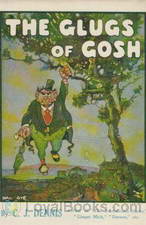 The Glugs of Gosh
The Glugs of Gosh
First published in 1917, The Glugs of Gosh satirizes Australian life at the start of the twentieth century – but the absurdities it catalogs seem just as prevalent at the start of the twenty-first. The foolishness of kings, the arrogance of the elite, the gullibility of crowds, the pride of the self-righteous, the unthinking following of tradition – all find themselves the targets of C. J. Dennis’ biting wit. | |
 The Songs of a Sentimental Bloke
The Songs of a Sentimental Bloke
The Songs of a Sentimental Bloke is a verse novel by Australian novelist and poet C. J. Dennis. The book sold over 60,000 copies in nine editions within the first year, and is probably one of the highest selling verse novels ever published in Australia.The novel tells the story of Bill, a larrikin of the Little Lonsdale Street Push, who is introduced to a young woman by the name of Doreen. The book chronicles their courtship and marriage, detailing Bill’s transformation from a violence-prone gang member to a contented husband and father. C.J. Dennis went on to publish three sequels to this novel: The Moods of Ginger Mick (1916), Doreen (1917) and Rose of Spadgers (1924) | |
 Ruined Reversolet
Ruined Reversolet
LibriVox volunteers bring you 16 recordings of A Ruined Reversolet by C. J. Dennis. This was the Weekly Poetry project for October 28, 2012.Clarence James Dennis was an Australian poet and journalist. In his varied career, he worked as a barman, shearer, solicitor's clerk, newspaper proprietor and (as do many Australians) a civil servant, before settling down in a rural retreat at Toolangi, in the Dandenong Ranges, east of Melbourne.His most famous work is "The Songs of a Sentimental Bloke", a verse novel written in an Australian vernacular and first published in 1915... | |
 Jim of the Hills - A Story in Rhyme
Jim of the Hills - A Story in Rhyme
Jim, an axe-man for a sawmill, who is a hard-knuckled, two-fisted fighting man when he has to be, but is shy around women, longs to find a wife and settle down. Two women, one a mercenary widow of the country town, the other a classy city girl, both set their caps for Jim. Will true love triumph? Will Jim's dog ever get his dinner? Will Jim ever get his tongue untied? These and other questions are answered in this story in rhyme. - Summary by Son of the Exiles | |
 Digger Smith
Digger Smith
“Digger Smith” is a series of narrative poems about an Australian soldier coming home in the closing months of the Great War minus a leg and with “ANZAC eyes” ... what a later war would call “The Thousand Yard Stare”. Despite his post-traumatic stress disorder, Digger Smith sets about ministering to everybody’s troubles but his own ... his internal conviction that his amputee status will make him seem “half a man” in the eyes of the lady love he left behind when he went off to the War. Oh Digger Smith, how little faith you have in woman... - Summary by Son of the Exiles | |
 Bill & Doreen's Courtship (Selections from "The Songs of a Sentimental Bloke")
Bill & Doreen's Courtship (Selections from "The Songs of a Sentimental Bloke")
"The Songs of a Sentimental Bloke" is a verse novel by Australian novelist and poet C. J. Dennis. The work was first published in book form in 1915 and sold over 60,000 copies in nine editions within the first year. A special pocket edition was even printed for the Australian soldiers in the trenches during the Great War. "The Songs of a Sentimental Bloke" tells the story of Bill, a larrikin of the Little Lonsdale Street push, who is introduced to a young woman by the name of Doreen. The book chronicles their courtship and marriage, detailing Bill's transformation from a violence-prone gang member to a contented husband and father. - Summary by Wikipedia | |
 Bill & Doreen Get Hitched (Selections from "The Songs of a Sentimental Bloke")
Bill & Doreen Get Hitched (Selections from "The Songs of a Sentimental Bloke")
"Bill & Doreen Get Hitched" is the sequel to "Bill & Doreen's Courtship". "The Songs of a Sentimental Bloke" is a verse novel by Australian novelist and poet C. J. Dennis. The work was first published in book form in 1915 and sold over 60,000 copies in nine editions within the first year. A special pocket edition was even printed for the Australian soldiers in the trenches during the Great War. "The Songs of a Sentimental Bloke" tells the story of Bill, a larrikin of the Little Lonsdale Street push, who is introduced to a young woman by the name of Doreen... | |
 Bill & Doreen's Married Life
Bill & Doreen's Married Life
"Bill & Doreen's Married Life " is the sequel to "Bill & Doreen's Courtship" and "Bill & Doreen Get Hitched", the latter two being "Selections from 'The Songs of a Sentimental Bloke'". "The Songs of a Sentimental Bloke" is a verse novel by Australian novelist and poet C. J. Dennis. The work was first published in book form in 1915 and sold over 60,000 copies in nine editions within the first year. A special pocket edition was even printed for the Australian soldiers in the trenches during the Great War... | |
 Australaise
Australaise
LibriVox volunteers bring you 6 recordings of The Austra--laise by C.J.Dennis. This was the Fortnightly Poetry project for January 13, 2013.THE AUSTRALAISE is a poem composed by C.J. Dennis, widely considered to the poet laureate of vernacular verse in Australia. It first appeared in his collection, Backblock Ballads and Other Verses, the first edition of which was published in 1913. A source from which Dennis drew inspiration was W.T. Goodge's poem The Great Australian Adjective, which first appeared in the Bulletin in 1898... | |
By: C. Jackson Craven (1908-1988) | |
|---|---|
 Our Atomic World: The Story of Atomic Energy
Our Atomic World: The Story of Atomic Energy
This booklet is part of the "Understanding the Atom Series" published by the Division of Technical Information of the U.S. Atomic Energy Commission. From an introduction of atomic theory by the ancient Greeks through the development of the fission bomb, the author covers such areas as the discovery of the nucleus, the discovery of isotopes, fission and fusion including a chronology of atomic theory to 1963, and the development of the Atomic Energy Commission. | |
By: C. L. Freeston (1865-1942) | |
|---|---|
 Cycling in the Alps
Cycling in the Alps
A guide to cycling in the European Alps in the days before surfaced roads and automobile tourism. As the author explains, the spectacular views are well worth the effort of pushing your bicycle up the passes and perfectly safe as long as your cycle is equipped with brakes. | |
By: C. M. Kornbluth (1923-1958) | |
|---|---|
 Search the Sky
Search the Sky
Ross was a junior trader on Halsey's Planet, and had great prospects but was not happy at all. Everything smelled of decay. The whole planet seemed to be slowly disappearing, the population dwindling month by month and year by year and yet no one seemd to care or even notice. Something was very, very wrong. When the first interstellar transport in 30 years arrived on Halsey's Planet, it brought things to a head. The ship had touched on six other colony worlds - and all six had been devoid of human life... | |
 Wolfbane
Wolfbane
This science fiction novel takes place in the year 2203, if we take literally the age of 250 years. A rogue planet, populated by strange machines known as Pyramids, has stolen the Earth from the Solar system, taking it off into interstellar space. The moon has been 'ignited' by alien technology to serve as a miniature sun around which both planets orbit. This new sun is rekindled every 5 years, though as the book opens, the rekindling is nearly overdue and there is fear among the populace that it may never happen again. - Summary by Wikipedia | |
By: C. S. Evans (1883-1944) | |
|---|---|
 Sleeping Beauty
Sleeping Beauty
A retelling of the classic fairy-tale, illustrated by one of the leading figures in the Golden Age of book illustration. Never underestimate the importance of receiving an invitation to significant social events. | |
By: C. S. Lewis (1898-1963) | |
|---|---|
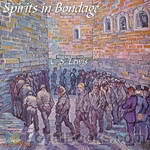 Spirits in Bondage: a cycle of lyrics
Spirits in Bondage: a cycle of lyrics
First published in 1919 under his pseudonym Clive Hamilton, Spirits in Bondage, is also the first published book by the notorious novelist C.S. Lewis. This early piece of work represents Lewis’ youth, as it was written at a time when the author had just returned from his military service in the First World War. In addition it differentiates itself from his other works, not just in terms of style, but also in themes due to his agnostic stand at the time. Written in the form of poetry, the piece is divided into three sections of poetry, each intended to be read in chronological order to gain complete access to its themes and ideas... | |
 Dymer
Dymer
This is a narrative poem written by C.S. Lewis, begun in his teen years and published when he was a tutor at Oxford. It appeared in print under the pseudonym of "Clive Hamilton," which is the author's own first name and his mother's maiden name. The story begins in "The Perfect City," a place instantly recognizable to a modern audience as a classic dystopia. Dymer lives in this city until the age of nineteen, when he suddenly rebels, breaking the laws of the city and striking out into the wilderness alone... | |
By: C. W. Wolf (-1866) | |
|---|---|
 Apis Mellifica
Apis Mellifica
Wolf's essay considers the homeopathic medicine Apis Mellifica, or the poison of the honey bee, as a therapeutic agent based on his experience as a practicing physician. | |
By: C.V. Tench | |
|---|---|
 Astounding Stories 01, January 1930
Astounding Stories 01, January 1930
In January of 1930 a new magazine with a flashy color cover appeared on newsstands, Astounding Stories of Super-Science. Filled with stories of adventure, sometimes with only a tinge of science, this magazine was to host and nurture many science fiction giants like Murray Leinster and Ray Cummings and would help inspire many of the writers of the "Golden Age of Science Fiction". This inaugural issue includes stories by Murray Leinster, Ray Cummings, S. P. Meek, Victor Rousseau and others. | |
By: Cal Stewart (1856-1919) | |
|---|---|
 Uncle Josh's Punkin Centre Stories
Uncle Josh's Punkin Centre Stories
A collection of comedic short stories from the perspective of an old country man. | |
By: Caleb Bingham (1757-1817) | |
|---|---|
 Columbian Orator
Columbian Orator
The Columbian Orator, a collection of political essays, poems, and dialogues first published in 1797, was widely used in American schoolrooms in the first quarter of the 19th century to teach reading and speaking. Typical of many readers of that period, the anthology included many speeches celebrating "republican virtues" and promoting patriotism. The Columbian Orator is an example of progymnasmata, containing examples for students to copy and imitate. In his Narrative of the Life of Frederick Douglass, former slave and abolitionist writer Douglass describes how he "got hold" of a copy of the Columbian Orator at the age of twelve, with far-reaching consequences for his life... | |
By: Calista McCabe Courtenay | |
|---|---|
 George Washington
George Washington
In this biography for young people, Calista McCabe Courtenay takes the reader from George Washington the surveyor to his early military career, first as a colonel in the Virgina militia and then as a member of General Braddock'a staff during the French and Indian War. He later commanded the Virginia forces before joining the First Continental Congress. Much of the book is devoted to his campaigns during the American Revolution. At the end, we see him as President for two terms. | |
By: Calvin Coolidge (1872-1933) | |
|---|---|
 State of the Union Addresses by United States Presidents (1923 - 1932)
State of the Union Addresses by United States Presidents (1923 - 1932)
The State of the Union address is a speech presented by the President of the United States to a joint session of the United States Congress, typically delivered annually. The address not only reports on the condition of the nation but also allows the President to outline his legislative agenda and national priorities. This album contains recordings of addresses from Calvin Coolidge and Herbert Hoover. - Summary by Wikipedia | |
By: Camden Pelham | |
|---|---|
 Chronicles of Crime Vol 1
Chronicles of Crime Vol 1
This catalogue of human weakness and at times downright atrocity has been brought together by Camden Pelham, a barrister-at-law of the Inner Temple during the second half of the 19th century. It is given in chronological order, the first case listed is from 1700, and the final case in Volume 1 being in 1816. Some of the most famous cases of the age are listed, from Dick Turpin and Captain Kidd, to the assassination of Spencer Perceval MP, and the Luddites. Some cases will shock with descriptions of horrific murders, whilst others will amuse with the idiocy of the perpetrators. These 275 cases give a fascinating insight into life during 18th and 19th century Britain. | |
By: Camille Flammarion (1842-1925) | |
|---|---|
 Omega: The Last Days of the World
Omega: The Last Days of the World
Omega: The Last Days of the World is a science fiction novel by astronomer Camille Flammarion. On 25th century Earth, a comet is on a path to collide with the Earth ending it all. Astronomers predict different scenarios as to how they will all die depending on the chemical composition of the comet. Omega probes the philosophical and political consequences that arise as the human race faces the end of the world. | |
 Urania
Urania
Urania is a work of science fiction from the fine mind of French astronomer Camille Flammarion. Named for Urania, the muse of astronomy, this book in three parts delves into philosophy, astronomy, interplanetary travel, romance, Mars, and the nature of reality. - Summary by A. Gramour | |
By: Campbell Stuart (1885-1972) | |
|---|---|
 Secrets of Crewe House: the story of a famous campaign
Secrets of Crewe House: the story of a famous campaign
Campbell Stuart, a Canadian, was involved in British efforts of propaganda during the two World Wars. His most active work was done during the first World War. This book is a detailed and illustrated account of his work during WWI, and more generally the efforts of British persons to direct propaganda campaigns against Germany and their allies with the intent of weakening German morale and shortening the war. Translations of some of the propaganda materials appear in the appendix and are read . - Summary by Patrick McHaffie | |
By: Candido Mariano da Silva Rondon (1865-1958) | |
|---|---|
 Roosevelt-Rondon Scientific-Expedition and the Telegraph Line Commission
Roosevelt-Rondon Scientific-Expedition and the Telegraph Line Commission
The Roosevelt–Rondon Scientific Expedition was the famous survey that took place in 1913-14 to follow the path of the Rio da Dúvida in the Amazon basin. The expedition was jointly led by Theodore Roosevelt, the former President of the United States, and Colonel Cândido Rondon, the Brazilian military engineer known for his explorations of the Western Amazon Basin and his lifelong support of Brazilian indigenous populations. Almost from the start, the expedition was fraught with problems: diseases... | |
By: Captain Charles de Créspigny | |
|---|---|
 Where the Path Breaks
Where the Path Breaks
The soldier awakened from the brink of death eight months after his injury on the battlefield. As he slowly regained his senses and his memory, the face of a girl creeps into his mind, and he soon recalls that this girl had married him out of pity on the day he went into battle. The wedding had been a true "war wedding".".Inspired by the face and the vague recollections which were taking shape, and after learning that his day-bride had since remarried (believing her day-husband killed in action), the battle-scarred soldier decides to re-invent himself, take on a new name, and seek a new life... | |
By: Captain John Smith (1580-1631) | |
|---|---|
 A Description of New England
A Description of New England
Captain John Smith (c. January 1580 – June 21, 1631) Admiral of New England was an English soldier, explorer, and author. He was knighted for his services to Sigismund Bathory, Prince of Transylvania. He is remembered for his role in establishing the first permanent English settlement in North America at Jamestown, Virginia, and his brief association with the Virginia Indian girl Pocahontas during an altercation with the Powhatan Confederacy and her father, Chief Powhatan. He was a leader of the Virginia Colony (based at Jamestown) between September 1608 and August 1609, and led an exploration along the rivers of Virginia and the Chesapeake Bay... | |
By: Captain Rees Howell Gronow (1794-1865) | |
|---|---|
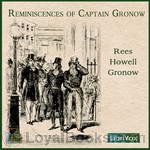 Reminiscences of Captain Gronow
Reminiscences of Captain Gronow
A collection of memoirs about the Peninsular War, the Battle of Waterloo, and society and personalities of Regency London and 19th century Paris, by a sometime Grenadier Guards officer, unsuccessful parliamentarian, and dandy. Gronow displays social attitudes of the day which would now be regarded as unacceptable, but is a clever raconteur who brings to life both the horrors of war and the gaiety of high society. | |
By: Captain S. P. Meek (1894-1972) | |
|---|---|
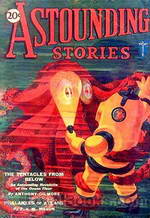 Astounding Stories 14, February 1931
Astounding Stories 14, February 1931
This issue includes "Werewolves of War" by D. W. Hall, "The Tentacles from Below" by Anthony Gilmore, "The Black Lamp" by Captain S. P. Meek, "Phalanxes of Atlans" by F. V. W. Mason, and contues with "The Pirate Planet" by Charles W. Diffin, | |
By: Cardinal Nicholas Patrick Wiseman (1802-1865) | |
|---|---|
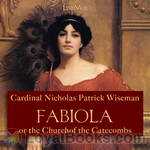 Fabiola or The Church of the Catacombs
Fabiola or The Church of the Catacombs
This historical novel is set in Rome in the early 4th century AD, during the time of the cruel persecution of Christians under the Emperor Diocletian. The heroine of the book is Fabiola, a young pagan beauty from a noble Roman family. Fabiola seems to have everything, including a superior education in the philosophers, yet under the surface, she is not content with her life. One day, in a fit of rage, she attacks and wounds her slave girl Syra, who is a secret Christian. The proud, spoiled Roman girl is humbled by Syra's humility, maturity and devotion to her in this situation, and a slow transformation begins... | |
By: Carey Rockwell | |
|---|---|
 Stand by for Mars
Stand by for Mars
Tom Corbett - Space Cadet was one of the first multimedia sensations. In the 1950s the character had his own radio show, TV series, comic book, breakfast cereal, and a line of young-adult novels. A cross between "Tom Brown's School Days" and Horatio Hornblower (and loosely based upon Robert A. Heinlein's novel "Space Cadet"), the books follow the adventures of Tom and his friends Roger Manning and Astro as they work their way through Space Academy to become officers of the Solar Guard. Along the way they tangle with space pirates, smugglers, and the threat of demerits for breaking the rules... | |
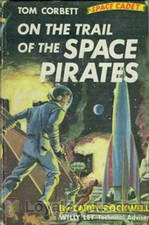 On the Trail of the Space Pirates
On the Trail of the Space Pirates
Tom Corbett is the main character in a series of Tom Corbett — Space Cadet stories that were depicted in television, radio, books, comic books, comic strips, and other media in the 1950s. The stories followed the adventures of Corbett and other cadets at the Space Academy as they train to become members of the Solar Guard. The action takes place at the Academy in classrooms and bunkrooms, aboard their training ship the rocket cruiser Polaris, and on alien worlds, both within our solar system and in orbit around nearby stars... | |
 Sabotage in Space
Sabotage in Space
This book is part of the on-going adventures of Tom Corbett in the Space Cadet Stories. Tom, Astro and Roger are determined to find the saboteurs but get framed in the process, risking court martial and expulsion from the Space Academy. NOTE: Carey Rockwell is a pseudonym used by Grosset & Dunlap. It is unknown who wrote the books. | |
 Danger in Deep Space (Dramatic Reading)
Danger in Deep Space (Dramatic Reading)
The year is 2353. Tom Corbett is a cadet with the Space Academy, training to become a member of the elite Solar Guard. Sent on a top-secret mission across the stars, Tom and his fellow crew members discover the nature of true loyalty, as they battle against danger in deep space. | |
By: Carine Cadby (1866-1975) | |
|---|---|
 Puppies and kittens and other stories
Puppies and kittens and other stories
Four stories about animals, primarily puppies and kittens, doing absolutely adorable and silly things - Summary by James R Hedrick | |
By: Carl E. Koppenhaver (1915-2000) | |
|---|---|
 Martin Luther
Martin Luther
This short, engaging volume summarizes the life of a priest who, intending to spark a lively academic debate by nailing 95 theses on a church door, unwittingly sets the continent aflame with the 1517 Reformation of the Catholic Church. - Summary by Elyse J. Wood | |
By: Carl Gustav Jung (1875-1961) | |
|---|---|
 Psychological Types: Or, the Psychology of Individuation
Psychological Types: Or, the Psychology of Individuation
Ever wondered if there is any "theoretical basis" for the well-known Myers–Briggs Type Indicator Personality Test? In this groundbreaking work of typology, Jung proposes three key dichotomies - extraversion/introversion, sensation/intuition, as well as thinking/feeling - as an attempt to reconcile the differing theories of Sigmund Freud and Alfred Adler. - Summary by Cao Yuqing | |
 Studies in Word-Association
Studies in Word-Association
Following his Psychology of the Unconscious Processes, this book is a series of papers compiled under the direction of Dr. Carl Jung, also known as the founder of psychoanalysis. It records research related to the association method conducted on persons with and without psychological conditions. Jung's work on association among "normal" individuals formed the basis of psychological types. - Summary by Cao Yuqing | |
 Theory of Psychoanalysis
Theory of Psychoanalysis
Jung says the following in his introduction: "in these lectures I have attempted to reconcile my practical experiences in psychoanalysis with the existing theory, or rather, with the approaches to such a theory." He goes on to say, "Here is my attitude towards those principles which my honored teacher Sigmund Freud has evolved from the experience of many decades." Some topics considered in this light are infantile sexuality, the conception of the libido, the unconscious, the dream, repression, and the etiology of neuroses. | |
 Collected Papers on Analytical Psychology
Collected Papers on Analytical Psychology
A collection of classical writings of Swiss psychologist Carl G. Jung, an influential thinker and the founder of analytical psychology. Written at intervals over a span of fourteen years, these selected articles and pamphlets contain many fascinating ideas that have become widely accepted psychological concepts nowadays, but had just started to develop at the time when the book was written. For instance, this is where Dr. Jung's ideas of introversion and extroversion, a contribution of vital importance to psychology, appeared for the very first time. Other topics explored include the concept of the unconscious, the study of psychological types, and the psychology of dreams. | |
 Psychology of the Unconscious
Psychology of the Unconscious
Jung says in his subtitle that this work is a study of the transformations and symbolisms of the libido and a contribution to the history of the evolution of thought. | |
By: Carl Lumholtz | |
|---|---|
 Unknown Mexico
Unknown Mexico
Unknown MexicoA Record of Five Years' Exploration Among the Tribes of the Western Sierra Madre; In the Tierra Caliente of Tepic and Jalisco; and Among the Tarascos of Michoacan By Carl Lumholtz, M.A. PREFACE In the course of my travels in Australia, and especially after my arrival at Upper Herbert River in Northern Queensland, I soon perceived that it would be impracticable for me to hunt for zoological specimens without first securing the assistance of the natives of the country. Thus it came about... | |
 Among Cannibals
Among Cannibals
From 1880-1883, the author undertook an academic expedition to Australia, with the purpose of recording zoological phenomena. While there, he developed an interest in the indigenous people and, unlike contemporary studies, did not restrict himself to appearance and outward behavior, but rather looked at the social, economic and anthropological. - Summary by Lynne Thompson | |
By: Carl Moon (1878-1948) | |
|---|---|
 Wongo And The Wise Old Crow
Wongo And The Wise Old Crow
Stories of an Indian boy and his friends told by a children’s author of yesteryear, published 1923. - Summary by david wales | |
By: Carl Parcher Russell (1894-1967) | |
|---|---|
 One Hundred Years In Yosemite: The Story Of A Great Park And Its Friends
One Hundred Years In Yosemite: The Story Of A Great Park And Its Friends
This recording of the 1931 book about Yosemite National Park comprises the narrative text about the Park from its discovery by non-natives in the Indian War of 1851 to the mid-twentieth century. The printed book contains dozens of early photographs and drawings, as well as an extensive timeline and bibliography, which are not here recorded. The author was an ecologist, historian, and administrator. He was an officer of the U.S. National Park Service for thirty four years, serving as the Chief Naturalist of Yosemite from 1923-1929 and later as Park Superintendent. - Summary by David Wales | |
By: Carl Richard Jacobi (1908-1997) | |
|---|---|
 Cosmic Castaway
Cosmic Castaway
"Within a year Earth would be a vassal world, with the Sirian invaders triumphant. Only Standish, Earth's Defense Engineer, could halt that last victorious onslaught—and he was helpless, the lone survivor of a prison ship wrecked in uncharted space." - Summary by publishers blurb | |
By: Carl Sandburg (1878-1967) | |
|---|---|
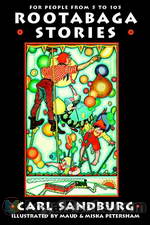 Rootabaga Stories
Rootabaga Stories
Carl Sandburg is beloved by generations of children for his Rootabaga Stories and Rootabaga Pigeons (which is not in the public domain), a series of whimsical, sometimes melancholy stories he originally created for his own daughters. The Rootabaga Stories were born of Sandburg’s desire for “American fairy tales” to match American childhood. He felt that the European stories involving royalty and knights were inappropriate, and so populated his stories with animals, skyscrapers, trains, corn fairies, and other colorful characters. | |
 Cornhuskers
Cornhuskers
Carl Sandburg’s collection of 103 poems that earned a Pulitzer Prize Special Letters Award in 1919. | |
 Wilderness
Wilderness
volunteers bring you 14 recordings of Wilderness by Carl Sandburg. This was the Fortnightly Poetry project for July 11, 2021. ------ This fortnightly prose poem is guaranteed to locate the aboriginal poet in you! Come one come all. Please join in! :D | |
 Love & Its Historical Shades: Poetic Expressions of Love Based on Varying Time Periods
Love & Its Historical Shades: Poetic Expressions of Love Based on Varying Time Periods
The theme around these poems is how poets expressed their ideas of love as well as the type of language used to convey said love through poetry; it also indirectly highlights how society may perceive love based on how those poets' values may have aligned with/against society during their era. All the poems revolve around a discussion of love through the language they used to describe their feelings of love as well as the images they paint through said language . | |
 Slabs of the Sunburnt West
Slabs of the Sunburnt West
Thirty-two poems about life in the American Midwest, focusing on the city of Chicago, Illinois. Summary by Matt Pierard | |
 Chicago Race Riots, July 1919
Chicago Race Riots, July 1919
Carl Sandburg's succinct reporting on and reflections upon the race riots that broke out In Chicago in July 1919. - Summary by KevinS | |
By: Carl Selwyn | |
|---|---|
 Venus Has Green Eyes
Venus Has Green Eyes
Flip Miller was a man about the universe, surviving one harrowing escapade after another and seeking for the lucky break that would make his fortune. Finally he had found in in a scrap of a map to a lost mine on Venus. Only he was foolish enough to search it out in the steaming jungle of that mud covered planet. But it was true and unbelievable riches were soon to be his. Well, as soon as he could get a ride out of the mud island where his plane had broken down. The one thing he was never afraid of in all his adventures were women... | |
By: Carl von Clausewitz (1780-1831) | |
|---|---|
 On War
On War
A classic work on military strategy by a veteran of the Napoleonic Wars. The author's style is dialectical: he makes two strong but opposing statements and then draws them together to describe many facets of war. Free of technical jargon, and suitable for modern readers. This audiobook is based on a 1909 English translation. | |
By: Carl Werner (1873-1945) | |
|---|---|
 Bringing up the Boy
Bringing up the Boy
''Bringing up the Boy'' is, according to its subtitle, ''A Message to Fathers and Mothers from a Boy of Yesterday concerning the Men of To-morrow'' and proffers advice for parents on raising boys from infancy until adulthood, to become fine, upstanding men. The fact that boys are temperamentally, emotionally and physically different from girls is never lost sight of in the discussions in the various chapters. Discussions include: advice on allowing boys to settle their own differences, without interference,... | |
By: Carleton Britton Case | |
|---|---|
 Stories from the Trenches: Funny Tales the Soldiers Tell
Stories from the Trenches: Funny Tales the Soldiers Tell
Carleton B. Case is well known for wit and humor, as the title of the book leads one to believe this book will follow suit. - Summary by April6090 | |
By: Carley Dawson (1910-1977) | |
|---|---|
 Mr Wicker's Window
Mr Wicker's Window
When Christopher Mason walked into Mr. Wicker's antique shop, he had no idea he would soon be embarking on a marvellous journey to China to find a wonderful tree made of jewels. He had no idea that Mr. Wicker was a magician and could travel through time. And that the tree was sought by others, not least among them the murderous Claggett Chew, a merchant in port and a pirate on the high seas, who also had knowledge of magic. But before Chris succeeded in quest, he would know of all these things and more... | |
By: Carlo Collodi (1826-1890) | |
|---|---|
 The Adventures of Pinocchio
The Adventures of Pinocchio
An old carpenter carves a little wooden puppet from a mysterious piece of wood that seems to have the ability to talk! He begins to love the little creature like his own son and names him Pinocchio. But the mischievous fellow runs away from his loving father as soon as he learns to walk. The Adventures of Pinocchio by Carlo Collodi follows the misadventures and naughty exploits of this delightfully “human” puppet who in his heart of hearts longs only to become a real boy. Carlo Collodi was the pen name of a gifted writer of children's books, Carlo Lorenzini who lived in Florence, Italy, during the late 19th century... | |
 Pinocchio
Pinocchio
This is the wonderful story of Pinocchio, the puppet who must learn many lessons before he can become a real boy. Carved by a woodcarver named Geppetto in a small Italian village, he dreamed of becoming a real boy but strays from the path of goodness many times and is very willing to listen to temptation. He has also been used as a character who is prone to telling lies and fabricating stories for various reasons. The story has appeared in many adaptations in other mediums. Pinocchio has been called an icon of modern culture, and one of most reimagined characters in the pantheon of children's literature... | |
By: Carlo Giuseppe Quadrupani (1740-1807) | |
|---|---|
 Light and Peace: Instructions for Devout Souls to Dispel Their Doubts and Allay Their Fears
Light and Peace: Instructions for Devout Souls to Dispel Their Doubts and Allay Their Fears
Padre Quadrupani was an Italian priest and member of the Clerics Regular of St. Paul, also known as the Barnabites, from their association with St. Barnabas Catholic Church in Milan, Italy. Quadrupani's spirituality is based on that of the illustrious Doctor of the Church, St. Francis de Sales (1567-1622). Like St. Francis, the Padre offers spiritual advice that is practical and balanced. Perhaps it is owing to this that Quadrupani's treatise has been so well received by Catholic laypersons and has been recommended by numerous bishops over the years... | |
By: Carlo Goldoni (1707-1793) | |
|---|---|
 Mistress of the Inn (La locandiera)
Mistress of the Inn (La locandiera)
Mirandolina runs an inn in Florence alone with only the help of her loyal employee Fabricius, and all of her guests are in love with her. The wealthy but only newly aristocratic Count D’Albafiorita and the impoverished but noble Marquis di Forlipopoli vie for her affections while debating the respective value of wealth and nobility (and insulting each other a good deal along the way). The misogynistic Cavalier di Ripafratta scoffs at their shared infatuation and ridicules the idea of love, but will he too fall victim to the beautiful innkeeper’s charms? And can any of them win the heart of the independent Mirandolina? | |
By: Carlos Blacker (1895-1975) | |
|---|---|
 Birth Control and the State
Birth Control and the State
This essay is one of a great number that endorse the principle of eugenics, a controversial study and practice that aims for society or government to 'self-direct' the course of human evolution. In this essay, one finds discussion of contraception, abortion, population growth and war, as well as questions of 'race.' One finds here a use of the term 'race' meaning something far different than what is used today. This is a provocative essay. - Summary by KevinS | |
By: Carlton McCarthy (1847-1936) | |
|---|---|
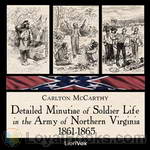 Detailed Minutiae of Soldier Life in the Army of Northern Virginia, 1861-1865
Detailed Minutiae of Soldier Life in the Army of Northern Virginia, 1861-1865
The author, who fought as a private in the Army of Northern Virginia during the Civil War, describes the Confederate soldier’s daily struggles with hunger, illness, fear, and the perils of combat; as well as his pride of service, love of comrades, and courage in the face of overwhelming odds | |
By: Caroline Abbot Stanley (1849-1919) | |
|---|---|
 Order Number 11
Order Number 11
General Order No. 11 has been issued by Union General Thomas Ewing in 1863. The goal was to deprive pro-Confederates in western Missouri of power and resources. The consequences are far reaching, still affecting the four counties until this very day. The novel, Order No. 11, A Tale Of The Border, tells about the order through the eyes of people who, with little choice, had to leave behind everything they knew. The book was a regional best seller. But the order is little known today. So here is a link to more information, just in case you want to learn more: https://en... | |
By: Caroline Atwater Mason (1853-1939) | |
|---|---|
 Woman Of Yesterday
Woman Of Yesterday
Anna is the daughter of a clergyman in a small town in Vermont. She is very happy with her lot. But when she goes to nurse a woman in the big city, she starts to discover the world. She sees new places, meets new people, and falls in love. This will test all the resolutions she once held dear. - Summary by Stav Nisser. | |
By: Caroline Dale Snedeker (1871-1956) | |
|---|---|
 Perilous Seat
Perilous Seat
Theria is a young Delphian woman who becomes an oracle. Persian wars, a doomed love affair, and a strong woman make up this well-researched novel set in Ancient Greece. - Summary by Lynne Thompson | |
By: Caroline Elizabeth Sarah Norton (1808-1877) | |
|---|---|
 Undying One and Other Poems
Undying One and Other Poems
“The Byron of our modern poetesses," was the verdict of Henry Nelson Coleridge, the eldest son of the poet Samuel Taylor Coleridge, writing in an 1840 issue of The Quarterly Review about the poet Caroline Norton. Born Caroline Elizabeth Sarah Sheridan in 1808, she was the granddaughter of the famous Irish playwright Richard Brinsley Sheridan. On their introduction to London Society, Caroline and her two sisters were dubbed The Three Graces for their beauty and accomplishments. Her disastrous marriage to George Norton in 1827 ultimately led to her campaigning successfully to change those Laws of England relating to Divorce, child custody and women's property rights... | |
By: Caroline Emelia Stephen (1834-1909) | |
|---|---|
 French History for English Children
French History for English Children
A history of France from Ancient Gaul up until 1880, written in short easy to comprehend chapters aimed at teaching English children. | |
By: Caroline French Benton | |
|---|---|
 Little Cook Book for a Little Girl
Little Cook Book for a Little Girl
Join Margaret, a little girl who really wants to learn how to properly cook and bake everything from seafood to cake, as she sets out to make all the recipes she can find from her family, friends and the rest of the world around her. A fun and informative cookbook with a light narrative! | |
By: Caroline Kane Mills Everett (1867-1921) | |
|---|---|
 Privilege of Pain
Privilege of Pain
We have seen that as mankind rises in the scale of civilization the body becomes increasingly less important. Nevertheless, I wish it to be clearly understood, that I do not maintain that it is preferable to be ill than well, but only that each state has its own peculiar privileges, which are rarely interchangeable. Health and sickness are merely different roads to achievement. The earth requires rain as well as sunshine; we need both tears and laughter; navvies are necessary and so are philosophers... | |
By: Caroline King Duer (1865-1956) | |
|---|---|
 Poems
Poems
Alice Duer was a successful American author who wrote poetry, novels and screenplays and campaigned tirelessly for women's suffrage. Her sister Caroline was an editor at Vogue magazine. This beautiful collection published in 1896 and the first of their early poems, is centered around the themes of love, friendship and loss. - Summary by Nemo | |
By: Caroline Lockhart (1871-1962) | |
|---|---|
 The Fighting Shepherdess
The Fighting Shepherdess
A classic style western written by one of the first female western writers. Caroline Lockhart was a rancher, writer and possibly the first woman to go over Glacier National Parks Swiftcurrent Pass. | |
 Dude Wrangler
Dude Wrangler
Spoiled, handsome, 24 year old Easterner meets pretty, no-nonsense gal from Wyoming, is instantly smitten and does a sea-change to try and impress her in this genial romantic comedy. | |
By: Caroline Snowden Guild | |
|---|---|
 Violet: A Fairy Story
Violet: A Fairy Story
A charming fairytale -- with realistic touches -- from the mid-19th Century. | |
By: Caroline Ticknor (1866-1937) | |
|---|---|
 Hypocritical Romance, and Other Stories
Hypocritical Romance, and Other Stories
This is a collection of twelve original and entertaining little romances. Literature is an important anchor that helps us understand society in the American Gilded Age in the late ninteenth century, and these stories allow us to understand the marriage market of the time. - Summary by Carolin"Miss Ticknor, well known as one of the most promising of the younger school of American writers, has never done better work than in the majority of these clever stories, written in a delightful comedy vein." - The Publisher | |
By: Carolyn Steward Taylor | |
|---|---|
 Werewolf -- Five Pieces
Werewolf -- Five Pieces
Five stories and essays about werewolves. | |
By: Carolyn Wells (1862-1942) | |
|---|---|
 The Jingle Book
The Jingle Book
A collection of silly poetry and limericks for children. | |
 Gold Bag
Gold Bag
The case involves a millionaire murdered in his study, suspicious servants, a beautiful niece, a private secretary and a will. enamored. A Holmes like detective is brought in to solve the mystery. | |
 Curved Blades
Curved Blades
In this suspensful whodunit a mean-spirited and wealthy dowager is found murdered in her boudoir supposedly killed once by poison and also by a blow to the head. Most bizarre is the fact that she is found sitting in front of her mirror lavishly dressed wearing a fortune in pearls and gems. Her niece, her social secretary, her cousin managing her finances, a mysterious count and a maid acting rather suspiciously are the suspects. The police are getting nowhere so famous criminologist Fleming Stone is called in. However is it possible he is so taken with the primary suspect that she could prevent him from solving the mystery??? - Summary by Celine Major | |
 Faulkner's Folly
Faulkner's Folly
Eric Stannard, wealthy artist and portrait painter of international reputation is found dead in his studio, an etching needle protruding from his chest. The lights had gone out momentarily just before he was found by a footman and a long-time friend. Standing beside the victim is Joyce his wife and his model Natalie both seeming to be struck with terror and shock!! At first glance the suspects seem obvious...but what about the artist's son who is in love with Natalie, the neighbor in love with the wife, a burglar? Will a psychic help find the murderer? Or will it fall upon the great detective Alan Ford to solve this one? - Summary by Celine Major | |
 Technique of the Mystery Story
Technique of the Mystery Story
For one, I have never been one of those who apologize for my frank and never-ending delight in mystery stories. Their mazes have led me unwearied through miles of printed pages, and if only the problem has been worth while, and its pursuit has led along surprising ways, past shuddery thickets and over fearsome bridges, my soul has returned to sober affairs refreshed and content. In a word, here is a remarkable volume which shows us how the wheels go round, not by dogmatic statement, but by an amazing breadth and variety of citation and quotation, showing not only what great mystery writers have thought of their art, but illustrating by apposite examples how they secured their effects... | |
 Chain of Evidence
Chain of Evidence
The Mystery: ”Mr. Stone," I began, "if three persons spent the night in an apartment so securely locked on the inside that there was no possible means of ingress, and if in the morning it was found that one of those three persons had been murdered at midnight, would you say that the guilt must rest upon either one or both of the other two persons?” The solution - who knows? Listen and enjoy. - Summary by Richard Kilmer | |
 Mystery of the Sycamore
Mystery of the Sycamore
Instead of prison time, former governor, Samuel Appleby, sentences his former rival, Daniel Wheeler to imprisonment on his homestead with a very strange addendum. He then endeavors to convince Mr. Wheeler to endorse his son’s candidacy for governor with a promise of commuting his sentence. In the meantime, Samuel Appleby is murdered in Wheeler’s home. The discovery of the identity of the murderer has many twists and turns filled with love, devotion, gumshoe dialog, and weird circumstances that will delight the listener in a most unusual way. | |
 Clue
Clue
Once Carolyn Wells began, or re-invented her writing career, 'The Clue' was her initial book which strayed from children's writings into mysteries and detective stories. It is also when we are introduced to her most famous of detectives, Fleming Stone. On the eve of her wedding day, Madeleine Van Norman, a beautiful young lady who is soon to come into her family fortune is found dead, apparently stabbed with an ominous blood-stained letter opener found nearby. There is nobody within the household... | |
 Eight Girls and a Dog
Eight Girls and a Dog
A book about eight girls who are members of the Blue Ribbon Cooking Club. Timmy Loo is their dog, who's always looking for a little scrap of food. He's cute and energetic. The girls decide it's time for a vacation and they all pack up and go to a summer house near Uncle and Aunt. They have many adventures there as they cook and take care of themselves. Delightful book! | |
 Deep Lake Mystery
Deep Lake Mystery
Imagine, if you will, a murder committed in a sealed room. A room which has been sealed from the inside, that is, with no possible means of exit, excepting a dangerous plunge through a window into a deep, foreboding lake with swirling eddies and rocks abound. Add to that image a wreath of flowers around the head and across the chest of the victim, a crucifix, an orange, a feather scarf tucked in here and there, two crackers, a handkerchief, and a feather duster. And a nail. Oh, and one more item to add to the curious array of arranged paraphenalia - a watch in a water pitcher by the bedside... | |
 Anybody But Anne
Anybody But Anne
Narrated in the first person by Raymond Sturgis, Anne's old high-school beau, the story opens with a lavish house party hosted by the Van Wycks. David Van Wyck has suddenly decided to become a philanthropist and proposes to give away his entire fortune to the building of a new library in the community, thus leaving his family penniless. The morning following his late meeting with the library committee, David is found dead in his locked study. The Van Wyck pearls are missing as is the deed giving away the fortune... | |
 Man Who Fell Through the Earth
Man Who Fell Through the Earth
A lawyer is leaving his office on the top floor of an office building. He sees the shadows of two men fighting through the clouded glass of an office door followed by a shot from the office across the hall. He goes to investigate. He finds no sign of either victim or assailant despite the fact that no one could have passed him in the hallway without being seen. A murder has been committed, that of the banker. Who is the murderer? A business associate, the banker’s beautiful ward, or a mysterious... | |
 Mystery Girl
Mystery Girl
Was it murder or suicide? All entrances to the study where the body was found were locked from the inside. The future college president and groom-to-be had no known cause for suicide, yet no clues in either direction appeared to make any sense. Was Anita, the Mystery Girl, who had just arrived in the New England college town, somehow been implicated? Had she any reason to ensure of the demise of the well-liked man? Perhaps some love letters between the two that nobody was to know about? And what of the mark of a ring on the deceased man's forehead? The college town was abuzz, and it seemed everyone had their own ideas of what actually happened. - Summary by Roger Melin | |
By: Carrie Chapman Catt (1859-1947) | |
|---|---|
 Woman Suffrage and Politics
Woman Suffrage and Politics
Written after the passage of the Nineteenth Amendment and published in 1923, "This book's essential contribution must be sought in its revelation of the bearing of American politics upon the question of woman suffrage." The book traces the history of the women's suffrage movement in the United States from 1848 through 1920. The Nineteenth Amendment to the Constitution giving women the right to vole was passed by Congress on June 4, 1919 and ratified August 18, 1920. - Summary by J. M. Smallheer | |
By: Carroll Mac Sheridan | |
|---|---|
 Stag Cook Book
Stag Cook Book
This book is dedicated to "that great host of bachelors and benedicts alike who have at one time or another tried to 'cook something': and who, in the attempt, have weakened under a fire of feminie raillery and sarcasm, only to spoil what, under more favorable circumstances, would have proved a chef-d'aeuvre." More than 100 famous men contributed recipes to this collection of recipes "by men, for men." - Summary by kathrinee | |
By: Carroll Watson Rankin (1864-1945) | |
|---|---|
 Dandelion Cottage
Dandelion Cottage
Carroll Watson Rankin's best known novel is Dandelion Cottage, published in 1904 by Henry Holt and Company. She first wrote the story serially for her own children. Considered a regional classic in the midwest, it tells of four young girls who negotiate the use of a derelict cottage as a playhouse by pulling dandelions for the owner, prosperous Mr. Black. The real life model for Mr. Black is generally acknowledged to be Marquette businessman and philanthropist, Peter White. The original Dandelion Cottage is located at 440 East Arch and is privately owned. | |
 The Cinder Pond
The Cinder Pond
Years ago, a manufacturer built a great dock, jutting out from and then turning parallel to the shore of a northern Michigan town. The factory was abandoned, and following the habits of small towns, the space between the dock and the shore became "The Cinder Pond." Jean started life in the colony of squatters that came to live in the shanties on the dock, but fortune, heroism, and a mystery combine to change her fortunes and those of her friends near the Cinder Pond. (Advertising material from the publisher, 1915) More than one girl who reads this story will envy Jeanne her queer little home out on the end of the old dock in Lake Superior... | |
 The Girls of Gardenville
The Girls of Gardenville
It is pleasant to have another book about a group of merry, natural girls, who have the attractions of innocence and youthful faults. "The Sweet Sixteen" Club made fudge, and went on picnics, and behaved just as jolly, nice maidens should. (The Outlook, vol. 82, Mar. 24, 1906) | |
 Adopting of Rosa Marie
Adopting of Rosa Marie
In this charming girl's book we meet again the four chums of Dandelion Cottage. Their friendship knit closer than ever by their summer at playing house, the girls enlarge their activity by mothering a pretty little Indian baby. "Those who have read Dandelion Cottage will need no urge to follow further. . . . A lovable group of four children, happily not perfect, but full of girlish plans and pranks and a delightful sense of humor." - Summary from the book | |
By: Carter Woodson (1875-1950) | |
|---|---|
 Century of Negro Migration
Century of Negro Migration
Dr. Woodson describes the internal migration of African Americans within the United States, including the Northern Migration and the draw of California. Cultural and sociological observations are made as well as a study of principal economic factors in this migration. Summary by KevinS. | |
By: Casimir Stryienski (1853-1912) | |
|---|---|
 Eighteenth Century (National History of France)
Eighteenth Century (National History of France)
This panoramic history of the last days of Bourbon France opens with the death of Louis XIV in 1715 and the minority of the ill-educated, Louis XV. The financial genius, John Law, precipitates a market bubble, with speculators frantic to buy and sell shares. The King, indolent and sensual, is content to leave the government to his cardinals and his mistresses. Meanwhile, France loses India and North America in the Seven Years' War. In 1774, Louis XVI succeeds his grandfather. Well-intentioned, but ineffectual, he falls under the sway of Marie-Antoinette and her favorites, so that when at last competent ministers are found to confront France's problems, it is too late. | |